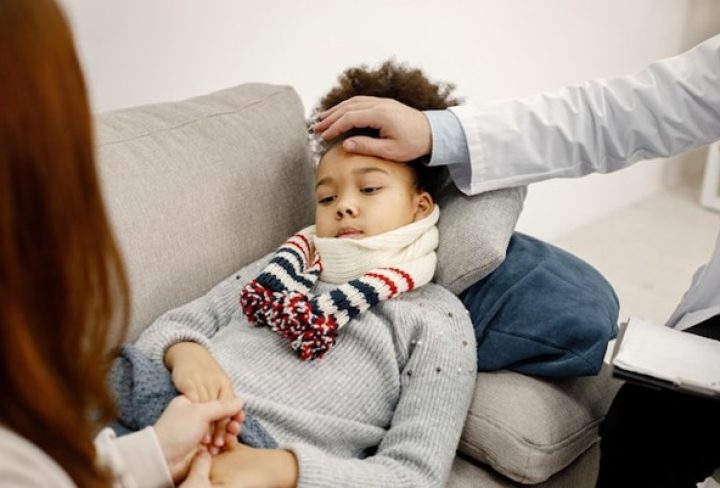What are Febrile Seizures?
Febrile seizures are convulsions that occur in young children triggered by a sudden rise in body temperature, usually due to an infection. They are relatively common, especially in children between the ages of 6 months and 5 years. While febrile seizures can be alarming, they are generally harmless and rarely lead to long-term health complications.
Types of Febrile Seizures
There are two types of febrile seizures:
Simple Febrile Seizures:
– Most common type.
– Last less than 15 minutes.
– Do not recur within 24 hours.
– Children recover quickly after the seizure.
Complex Febrile Seizures:
– Last longer than 15 minutes.
– Can occur more than once within 24 hours.
– May affect one side of the body more than the other.
– Often require further medical evaluation.
What Causes Febrile Seizures?
Febrile seizures occur due to a rapid increase in body temperature, often resulting from infections like:
– Viral Infections: Commonly associated with febrile seizures, such as the flu, colds, or roseola.
– Bacterial Infections: Less commonly, bacterial infections like ear infections or pneumonia can trigger seizures.
– Post-Vaccination Fever: Some children may develop a fever after vaccinations, potentially leading to a febrile seizure.
Who is at Risk?
Certain factors increase the risk of febrile seizures, including:
– Family history of febrile seizures.
– First febrile seizure occurring before 18 months of age.
– High fever (above 38°C or 100.4°F).
Symptoms of Febrile Seizures
Febrile seizures usually occur on the first day of a fever and may present with:
– Sudden Onset: The child may lose consciousness and experience jerking or shaking movements.
– Body Stiffness: The body may become rigid, with eyes rolling back.
– Teeth or Jaw Clenching: Some children may clench their teeth or jaws during the seizure.
– Cyanosis: The lips or face may turn blue due to interrupted breathing.
– Postictal Phase: After the seizure, the child may appear drowsy or disoriented for a short time.
What to Do During a Febrile Seizure
If your child experiences a febrile seizure, follow these steps:
– Stay Calm: Remain as calm as possible to manage the situation effectively.
– Protect the Child: Place your child on a safe surface, on their side, to avoid choking.
– **Do Not Restrain: Do not attempt to hold the child down or stop the seizure movements.
– Clear the Area: Remove nearby objects that could cause injury.
– Monitor the Time: If the seizure lasts more than 5 minutes, seek emergency medical help immediately.
– Do Not Put Anything in the Child’s Mouth: This could cause harm and is unnecessary.
After the Seizure
– Comfort Your Child: Once the seizure ends, reassure and comfort your child.
– Check for Fever: Take their temperature and use fever-reducing medications like paracetamol if advised by a doctor.
– Contact Your Pediatrician: Always consult a pediatrician after a first febrile seizure to rule out underlying conditions.
Diagnosing Febrile Seizures
Diagnosis is based on the child’s medical history, seizure description, and a physical examination. Additional tests may include:
– Blood Tests: To rule out infections or other underlying conditions.
– Lumbar Puncture: May be recommended to check for meningitis.
– Electroencephalogram (EEG): To rule out epilepsy in cases of complex or recurrent seizures.
Treatment and Management
Most febrile seizures do not require specific treatment beyond fever management and ensuring the child’s safety during the seizure. In some cases:
– Antipyretics: Fever-reducing medications may be advised.
– Anticonvulsants: Rarely, if seizures are frequent or prolonged, medication might be recommended.
Preventing Febrile Seizures
Although prevention is not always possible, you can reduce the risk by:
– Fever Management: Treat any fever promptly and ensure your child stays hydrated.
– Regular Pediatric Check-Ups: Maintain regular health monitoring through pediatric visits.
Long-Term Outlook
The vast majority of children who experience febrile seizures do not go on to develop epilepsy or other seizure disorders. The risk of future febrile seizures decreases as the child grows older, but there is a slight chance of recurrence.
When to Seek Emergency Help
Immediate medical attention is needed if:
– The seizure lasts more than 5 minutes.
– The child struggles to breathe or turns blue.
– The child remains unresponsive or extremely lethargic post-seizure.
– The seizure occurs without a fever.
– Another seizure occurs within 24 hours.
Proper understanding and quick response can help in managing febrile seizures effectively and ensuring your child’s well-being.

